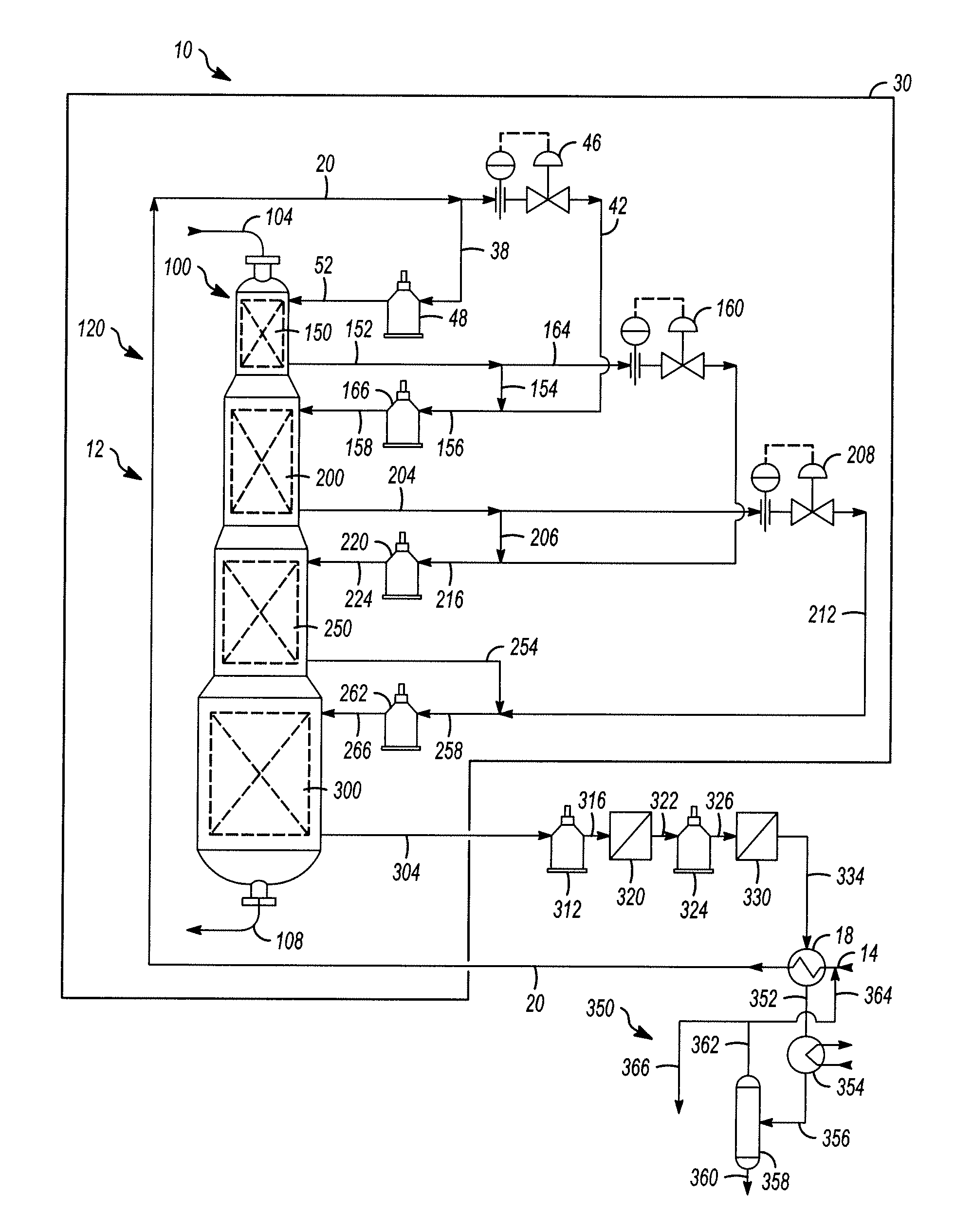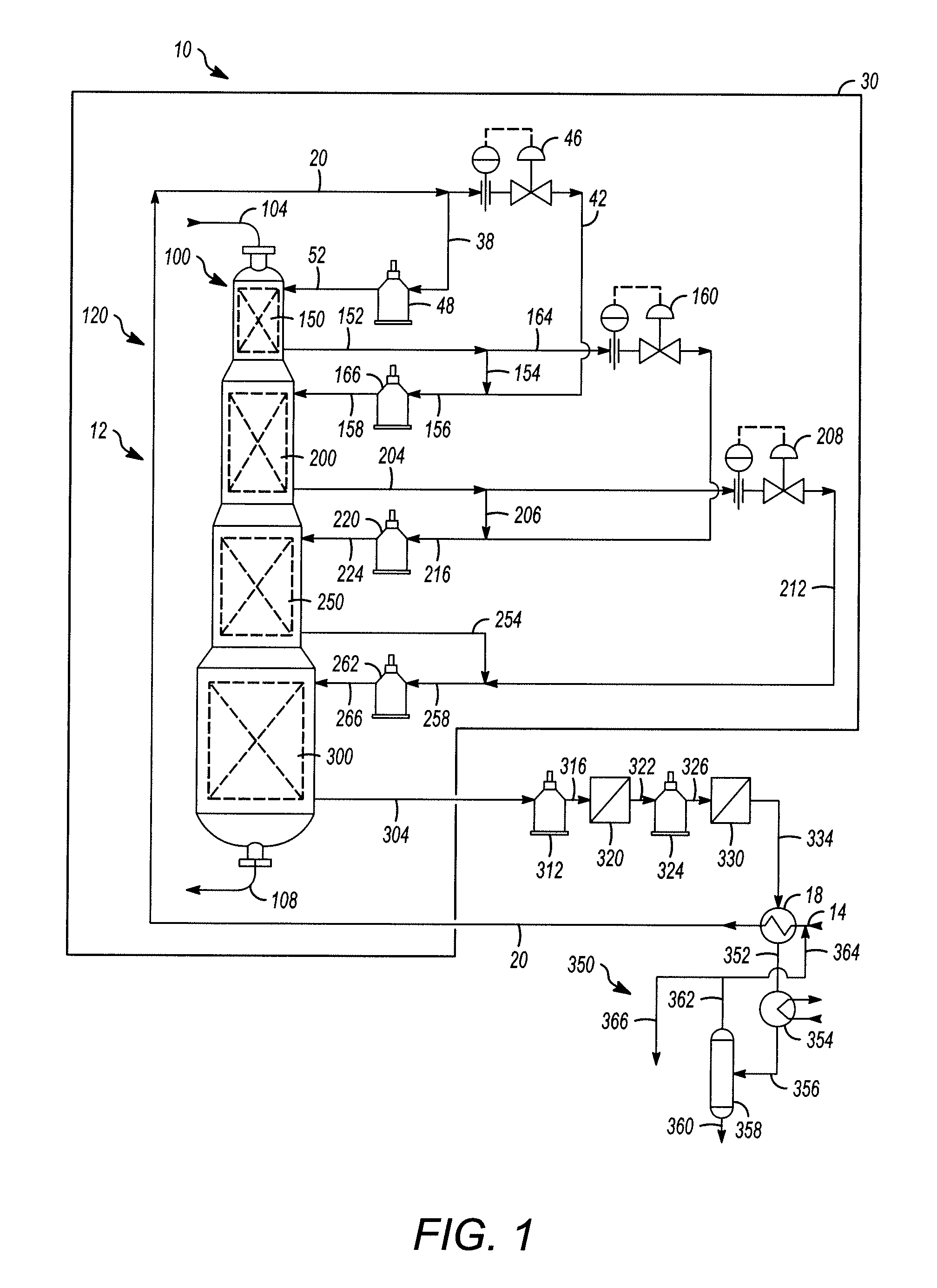Hydrocarbon Conversion Process Including a Staggered-Bypass Reaction System
a reaction system and hydrocarbon technology, applied in the field of hydrocarbon conversion process, can solve the problems of limiting the increased feed rate or the increased reformate octane potential of the unit, and achieve the effects of reducing the bottleneck reducing the number of individual fired heater cells, and maximizing the potential for both increased feed rate and reformate octan
- Summary
- Abstract
- Description
- Claims
- Application Information
AI Technical Summary
Benefits of technology
Problems solved by technology
Method used
Image
Examples
Embodiment Construction
[0017]A wide variety of hydrocarbon conversion processes can include multiple reaction zones. Exemplary hydrocarbon conversion processes include at least one of reforming, alkylating, de-alkylating, hydrogenating, hydrotreating, dehydrogenating, isomerizing, dehydroisomerizing, dehydrocyclizing, cracking, and hydrocracking processes. Catalytic reforming may be referenced hereinafter in the embodiment depicted in the drawing.
[0018]Referring to FIG. 1, an exemplary hydrocarbon conversion zone 10 is depicted with the shown equipment generally not drawn to scale. The hydrocarbon conversion zone 10 can include a series of reaction zones 12, including at least some of these zones in a staggered-bypass reaction system 30. The staggered-bypass reaction system 30 is known to those of skill in the art and one exemplary staggered-bypass reaction system 30 is disclosed in U.S. Pat. No. 5,879,537 (Peters), which is hereby incorporated by reference in its entirety. As such, the hydrocarbon flows ...
PUM
| Property | Measurement | Unit |
|---|---|---|
| pressures | aaaaa | aaaaa |
| temperature | aaaaa | aaaaa |
| mass flow rate | aaaaa | aaaaa |
Abstract
Description
Claims
Application Information
 Login to View More
Login to View More - R&D
- Intellectual Property
- Life Sciences
- Materials
- Tech Scout
- Unparalleled Data Quality
- Higher Quality Content
- 60% Fewer Hallucinations
Browse by: Latest US Patents, China's latest patents, Technical Efficacy Thesaurus, Application Domain, Technology Topic, Popular Technical Reports.
© 2025 PatSnap. All rights reserved.Legal|Privacy policy|Modern Slavery Act Transparency Statement|Sitemap|About US| Contact US: help@patsnap.com


